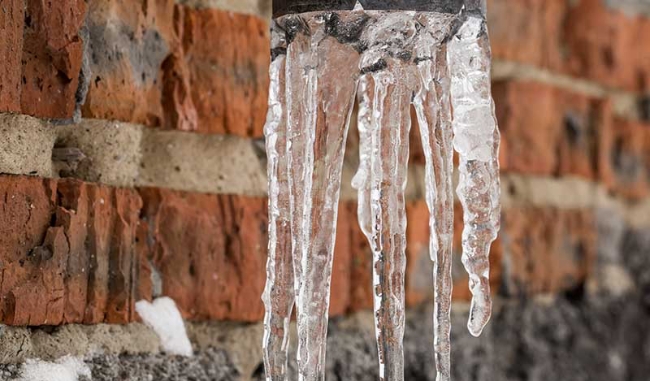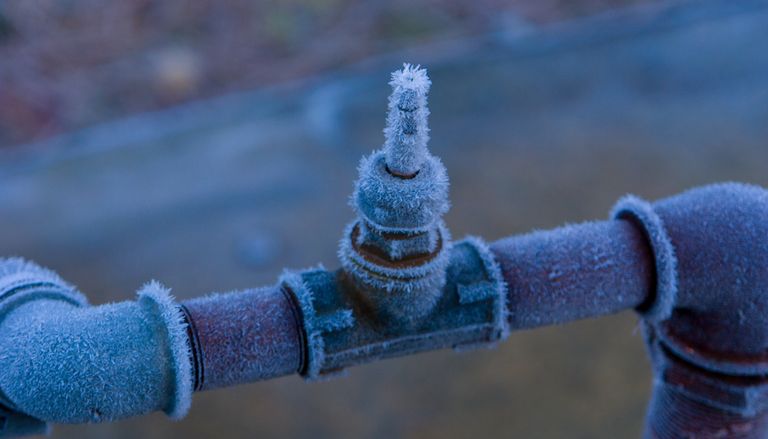Ways to Safeguard Plumbing System from Freezing: Key Advice
Ways to Safeguard Plumbing System from Freezing: Key Advice
Blog Article
Almost everyone will have their private perception about 6 Ways to Prevent Frozen Pipes.

Winter can wreak havoc on your plumbing, particularly by freezing pipelines. Right here's just how to prevent it from happening and what to do if it does.
Introduction
As temperatures decrease, the danger of icy pipes increases, possibly bring about pricey repairs and water damage. Comprehending how to avoid frozen pipes is vital for house owners in cold climates.
Avoidance Tips
Protecting prone pipelines
Wrap pipes in insulation sleeves or use heat tape to secure them from freezing temperature levels. Focus on pipes in unheated or external areas of the home.
Home heating methods
Maintain interior rooms sufficiently warmed, particularly areas with plumbing. Open up cabinet doors to allow warm air to flow around pipes under sinks.
Exactly how to identify icy pipes
Try to find decreased water circulation from taps, uncommon smells or sounds from pipelines, and visible frost on revealed pipelines.
Long-Term Solutions
Architectural modifications
Take into consideration rerouting pipes away from outside walls or unheated areas. Include additional insulation to attics, basements, and crawl spaces.
Upgrading insulation
Invest in top quality insulation for pipelines, attics, and wall surfaces. Proper insulation aids preserve regular temperatures and lowers the threat of icy pipes.
Protecting Outdoor Pipes
Garden hose pipes and exterior faucets
Separate and drain pipes yard tubes before wintertime. Mount frost-proof spigots or cover outside faucets with insulated caps.
Understanding Icy Pipelines
What creates pipelines to ice up?
Pipelines freeze when revealed to temperatures below 32 ° F (0 ° C) for prolonged durations. As water inside the pipes freezes, it increases, putting pressure on the pipeline wall surfaces and potentially triggering them to burst.
Dangers and problems
Frozen pipelines can lead to supply of water interruptions, property damage, and costly fixings. Ruptured pipelines can flood homes and trigger comprehensive structural damage.
Signs of Frozen Piping
Determining icy pipes early can prevent them from breaking.
What to Do If Your Pipelines Freeze
Immediate activities to take
If you think frozen pipelines, maintain taps available to alleviate stress as the ice thaws. Use a hairdryer or towels taken in warm water to thaw pipes gradually.
Final thought
Stopping frozen pipelines requires aggressive steps and fast reactions. By understanding the reasons, indicators, and preventive measures, home owners can shield their plumbing throughout cold weather.
6 Proven Ways to Prevent Frozen Pipes and Protect Your Home
Disconnect and Drain Garden Hoses
Before winter arrives, start by disconnecting your garden hoses and draining any remaining water. Close the shut-off valves that supply outdoor hose bibs and leave the outdoor faucet open to allow any residual water to drain. For extra protection, consider using faucet covers throughout the colder months. It’s also important to drain water from any sprinkler supply lines following the manufacturer’s directions.
Insulate Exposed Pipes
Insulating your pipes is an effective way to prevent freezing. Pipe insulation is readily available at home improvement stores and is relatively inexpensive. Pay close attention to pipes in unheated areas such as the attic, basement, crawl spaces, or garage. Apply foam insulation generously to create a buffer against the cold. You can also wrap your pipes in heat tape or thermostat-controlled heat cables for added warmth.
Seal Air Leaks
Inspect your home for any cracks or openings that could let in cold air. Seal any holes around the piping in interior or exterior walls, as well as the sill plates where your home rests on its foundation. Additionally, make sure to keep your garage door closed unless you’re entering or exiting. Leaving it open creates a significant air leak that can lead to frozen pipes.
Allow Warm Air Circulation
During cold snaps, it’s essential to allow warm air to circulate evenly throughout your home. Leave interior doors ajar to promote better airflow. Open kitchen and bathroom cabinets to help distribute heat consistently around the rooms. If you have small children or pets, be sure to remove any household chemicals or potentially harmful cleaners from open cabinets for safety.
Let Faucets Drip
A small trickle of water can make a big difference in preventing ice formation inside your pipes. When temperatures drop significantly, start a drip of water from all faucets served by exposed pipes. This continuous flow helps prevent the water from freezing. Additionally, running a few faucets slightly can relieve pressure inside the pipes, reducing the chances of a rupture if the water inside does freeze.
https://choateshvac.com/6-proven-ways-to-prevent-frozen-pipes-and-protect-your-home/

I have been very intrigued by Preventing and dealing with frozen pipes and I am praying you enjoyed the entire entry. Those who enjoyed reading our article please do not forget to share it. Many thanks for being here. Don't hesitate to come visit our site back soon.
Set An Appointment Report this page